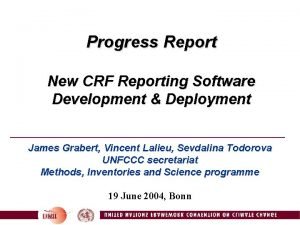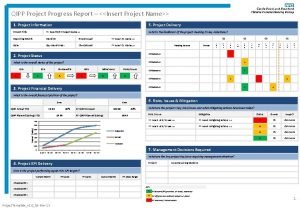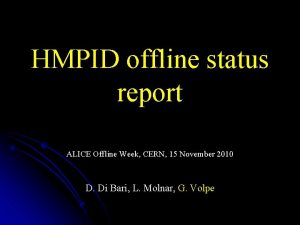AMS offline software progress report E Choumilov AMS



- Slides: 3

AMS offline software progress report. E. Choumilov, AMS TIM 25. 07

TOF/ACC/ECAL software sections: The latest (2 weeks old) release of TOF, ACC and ECAL software contains only cosmetic changes with respect to the previous release. The main feature – all default calibration files are put into the Data Base. Utility software section: New utility to control DB-updates for TOF/ACC calibration data was developed. The current version is used for pedestals data manipulation. The program use GUI written on Perl/Tk language. This program internally call standard offline software in “DB-update” mode using standard data cards (plus 2 specific). So the user should “setenv” all environment variables as for running the standard offline jobs. Special directory /f 2 users/tofaccuser/pedcalib was created to keep all necessary files with public access (group xv). Readme file in this directory. The program is for use under the Linux. To run : cd /f 2 users/tofaccuser/pedcalib and. /Tof. Acc. Ped. DBWriter. pl. Use online help for more details.

It is implied that in /pedfiles sub-directory there are some Tof or Acc pedestals files which are the output of standard offline calibration job. This job scan real data files and search for on-board ped-calibration tables. In offline ped-calibration mode this job may use real events to extract pedestals values and their rms. In both cases offline program can put these pedestals into DB and save into standard files. At least for early data taking period automatic DB-update is not good idea, so the described utility is quite useful and safe because give you convenient access to ped-files data before taking the decision to write them into DB. Similar utility for control of more complicated calibration parameters (like counters timing offsets, gains, etc) may be much more useful. Now let me to demonstrate how it works…





